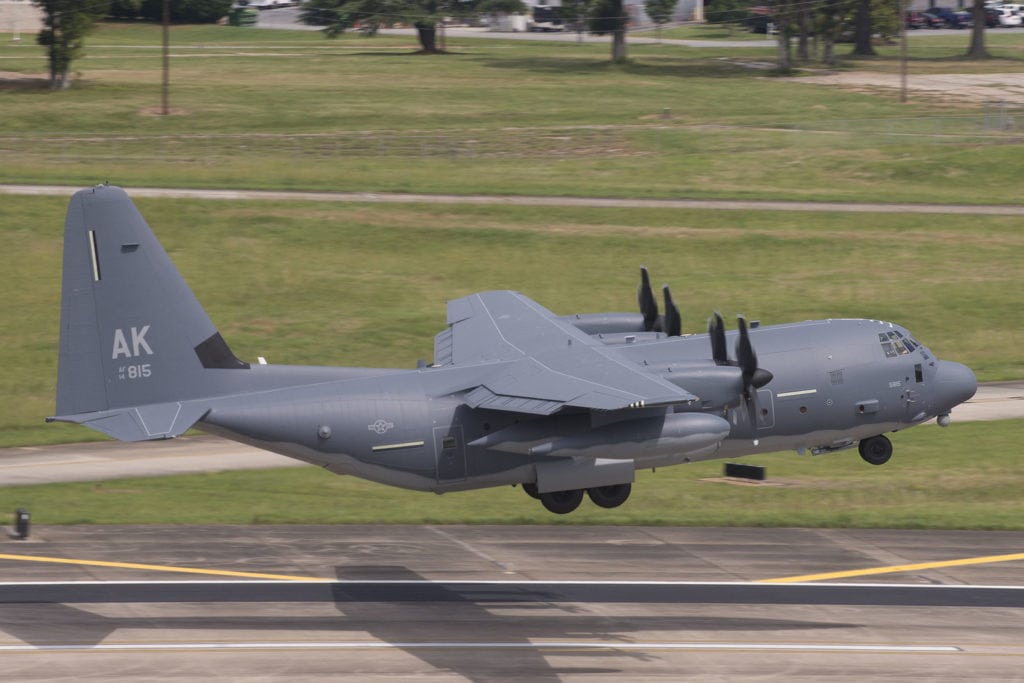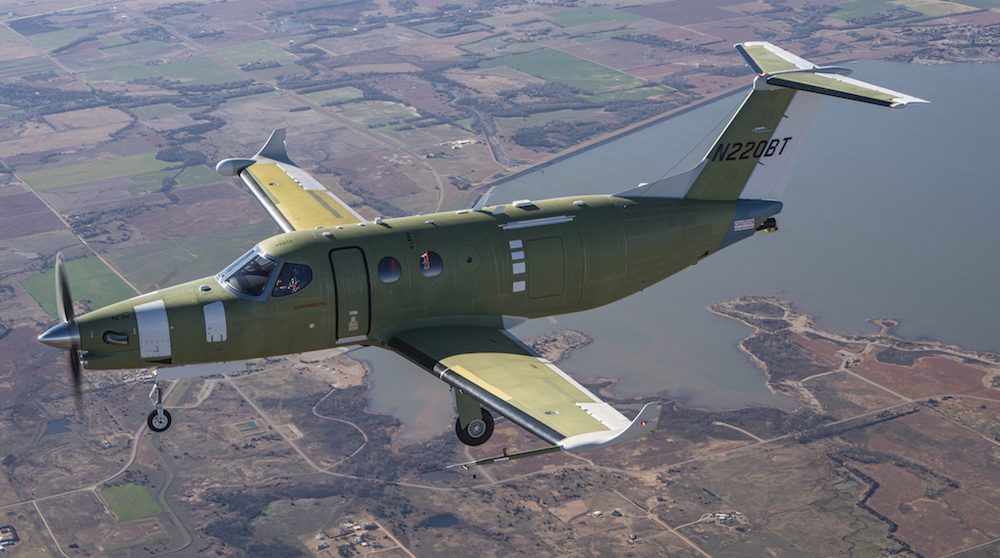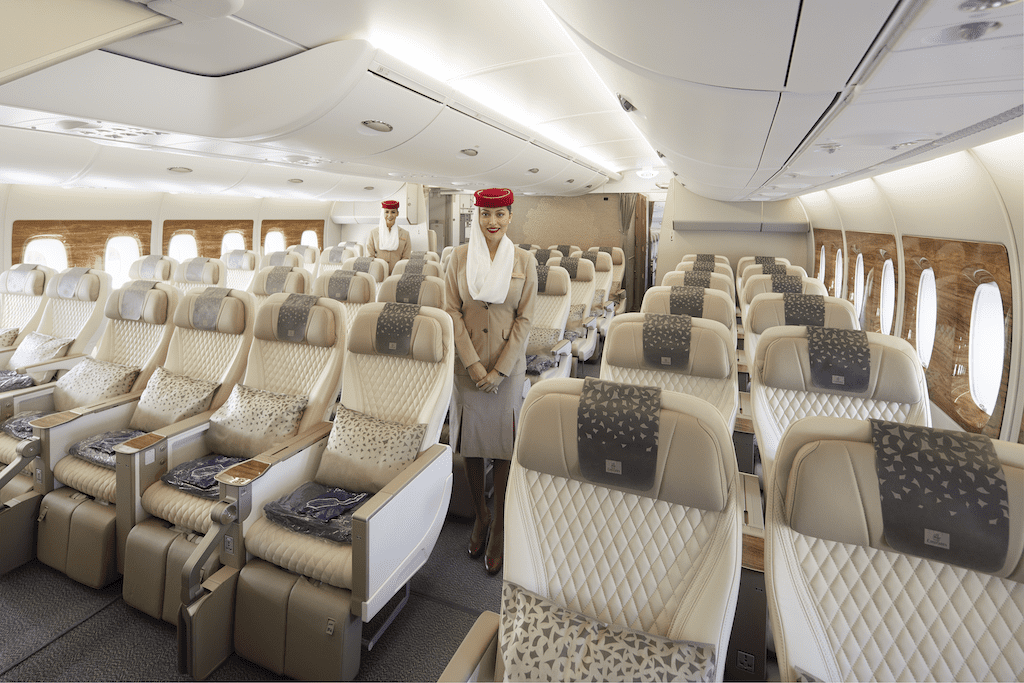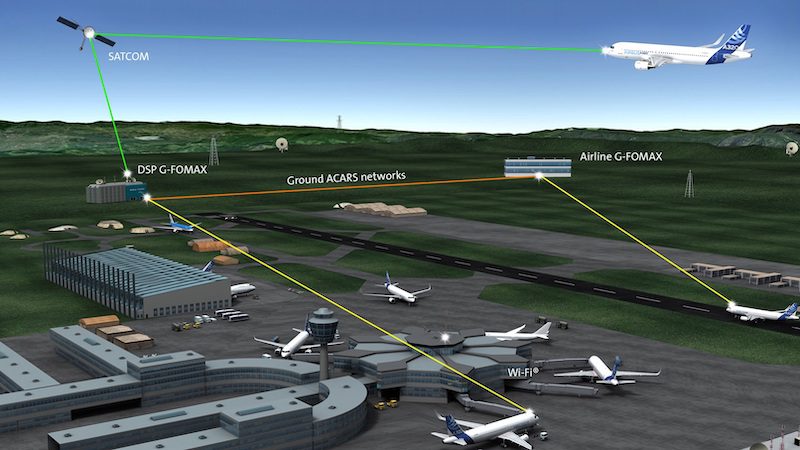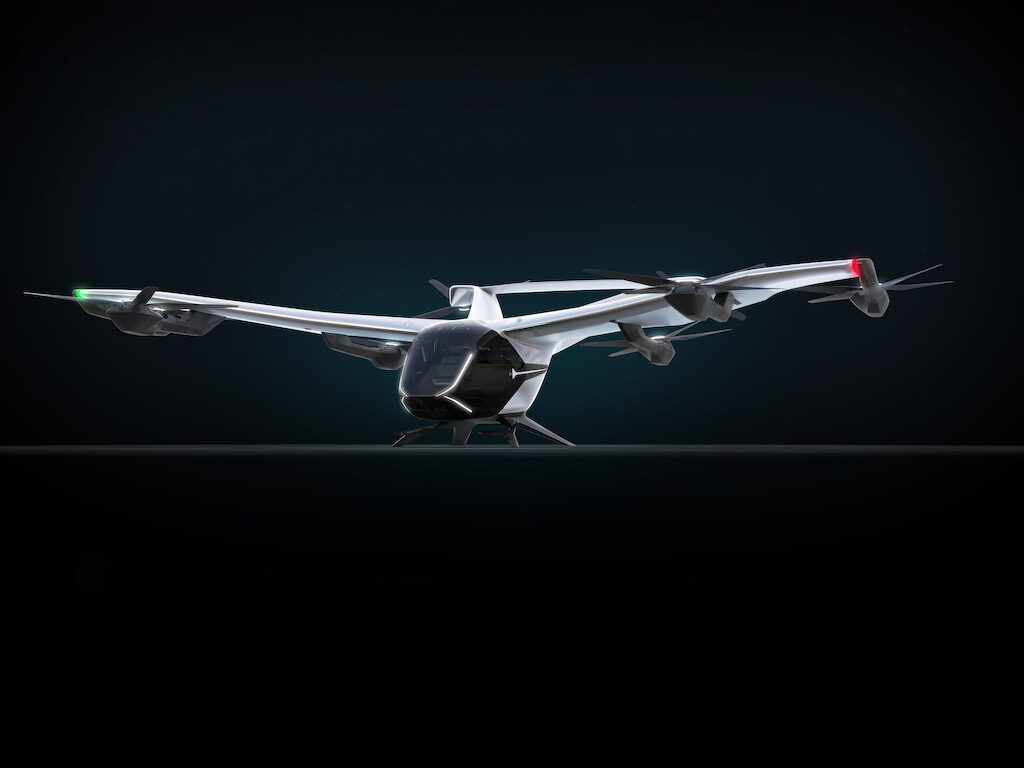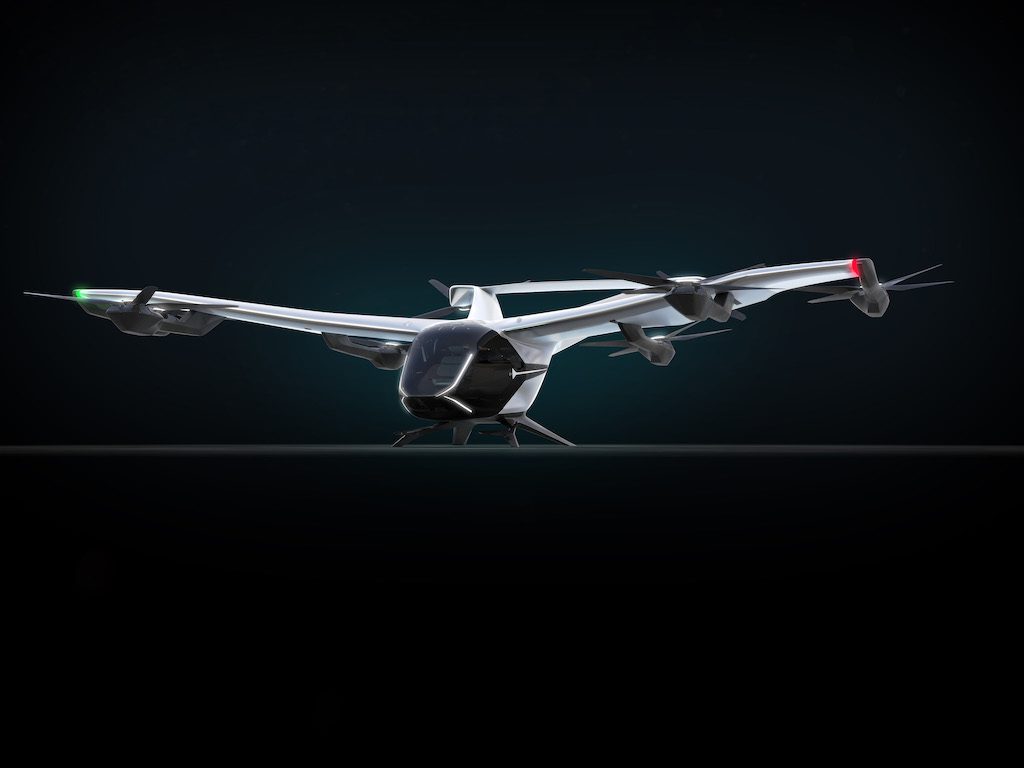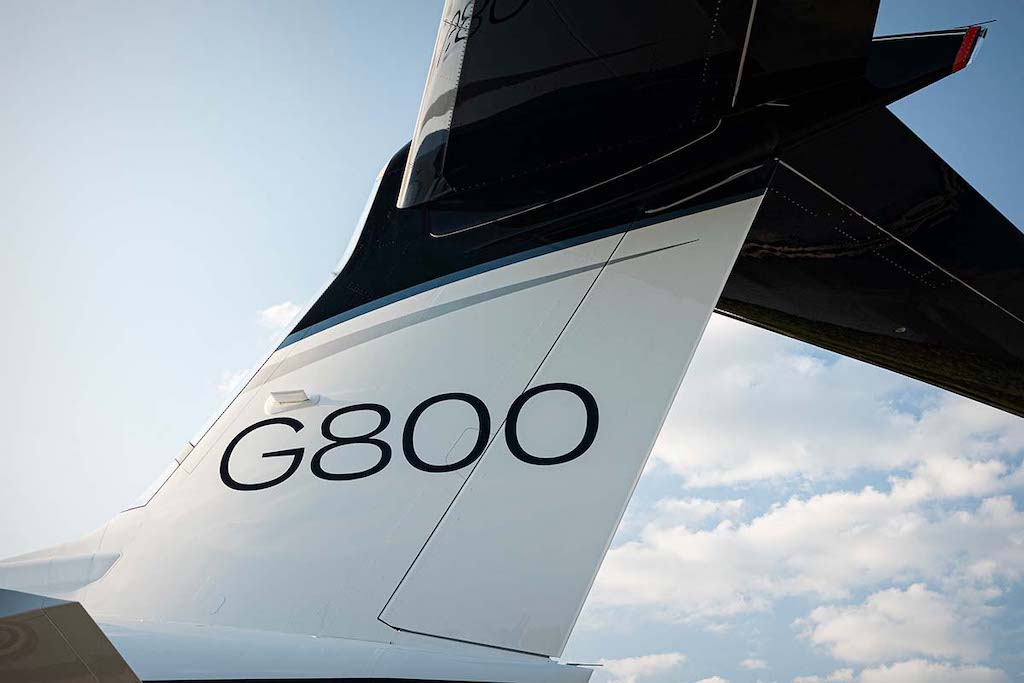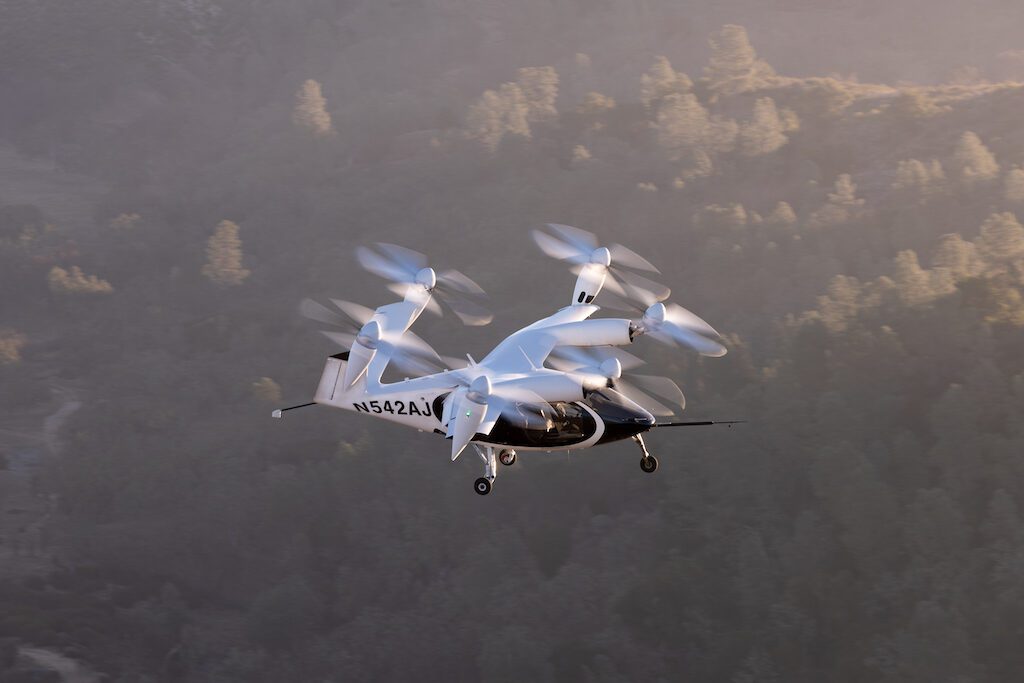
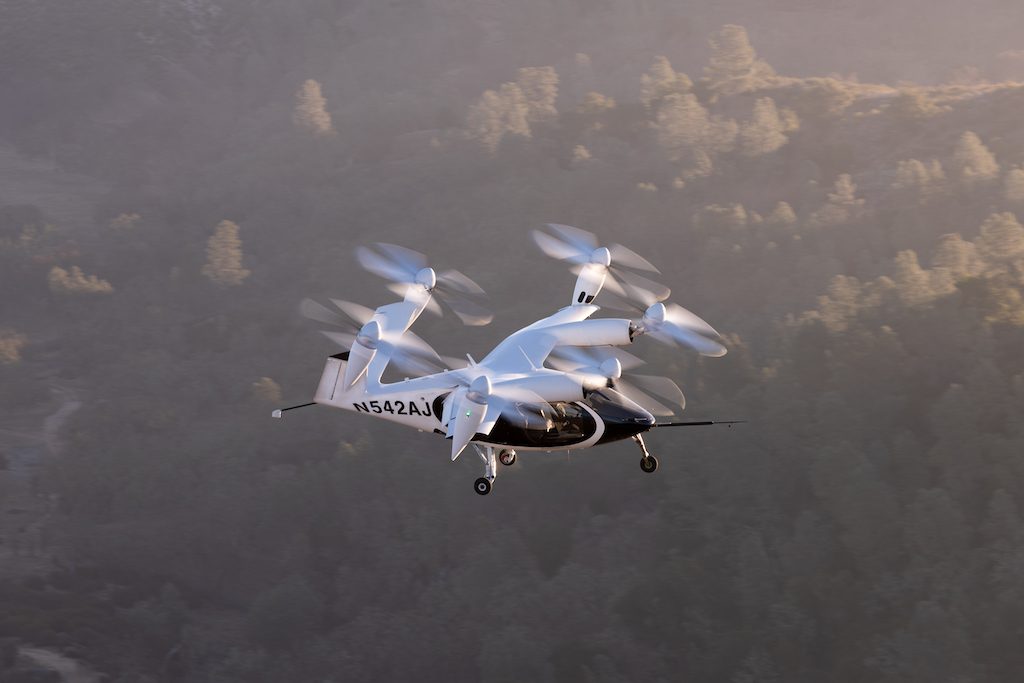
Joby Aviation is ready to begin aircraft conformity inspections for its first FAA-conforming part, a single composite airframe panel. (Joby Aviation)
Joby Aviation is on track to begin its first Federal Aviation Administration (FAA) aircraft conformity inspection, the latest in a series of flight testing and program advancements shared by the company during its first quarterly earnings call on Thursday.
The California-based company is developing a four-passenger electric vertical takeoff and landing (eVTOL) aircraft, and completed a series of program advancements toward achieving FAA type certification during the third quarter of 2021 published in a Nov. 11 letter to shareholders. According to the FAA, the agency uses aircraft conformity inspections to verify that a manufacturer’s airframe conforms to the type design established in their approved program and operational scope.
Lina Spross, a former aircraft and avionics certification engineer for United Airlines and L3 Technologies, is leading the development of Joby’s first FAA-conforming part, a single airframe composite panel.
“In breaking news, we’re on track to start our first conformity inspection this week with an FAA designee on site, the focus of the inspection is a simple composite panel but its properties are representative of the entire airframe structure and delivering it according to the required standards which is what the FAA is checking as part of this inspection,” Paul Sciarra, executive chairman of Joby Aviation said during the call.
Sciarra said that now with more than 1,000 test flights completed across a range of different prototype aircraft, Joby’s “focus as a company is now shifting beyond engineering and initial testing to certification and commercialization.”
In addition to the start of aircraft conformity inspection, the company’s human factors team also completed an initial pilot evaluation campaign of their production cockpit design. Their flight control computer has also completed high risk electronic environmental testing, also a key step toward earning type certification. Other testing currently occurring on the production aircraft includes tail spar load, battery drop, lightning strike and cabin bird strike, Sciarra said during the call.
Other accomplishments from the third quarter include completing a 154-mile flight, the beginning of an Advanced Air Mobility (AAM) national campaign with NASA and the merger of Joby with Reinvent Technology Partners (RTP) to become a public traded company on the New York Stock Exchange. Joby has also entered the second of five stages toward earning a Part 135 Air Carrier Certificate from the FAA that will authorize passenger-carrying revenue flights in U.S. airspace.
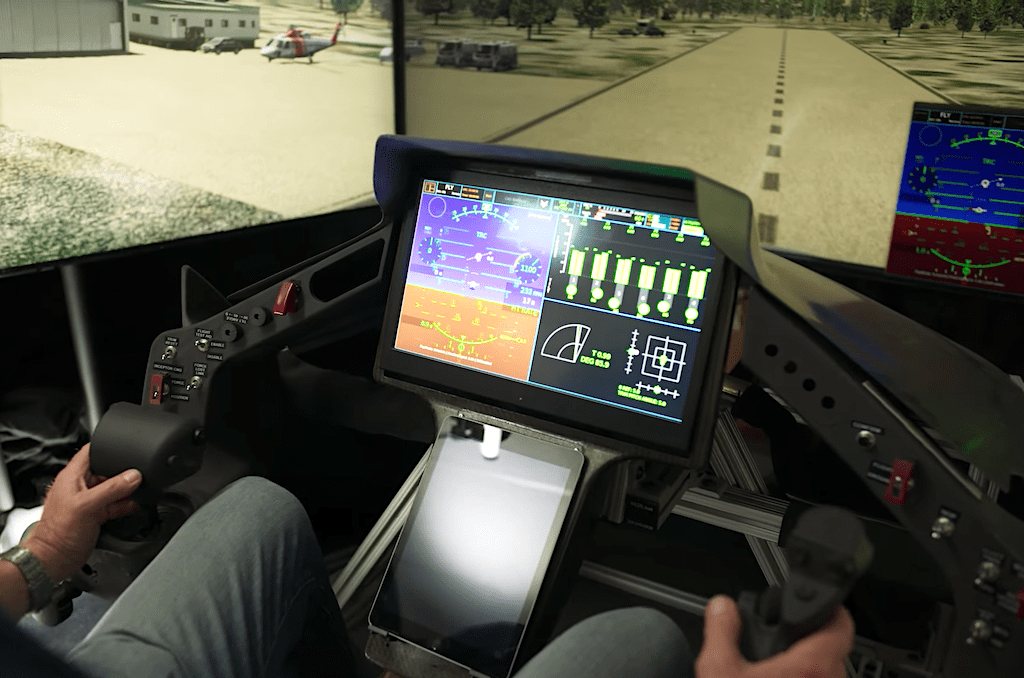
The cockpit of Joby Aviation’s eVTOL simulator. (Joby Aviation)
“We’re incredibly grateful to the amazing acoustics team at NASA for spending a few weeks with us at our flight test base,” JoeBen Bevirt, Joby’s founder and CEO, said during the call. “The testing work that we’ve done with them is a key step and a foundation for the skyport permitting that we’re doing with cities across the country.
Sciarra also addressed the company’s preference to keep a vertical integration strategy that will see Joby as both the manufacturer and the operator of its eVTOL aircraft, although that could occur in a variety of different ways based on who and where their eVTOL is being acquired an operated.
“We believe the right way to commercialize these aircraft isn’t to sell them but instead to operate them ourselves, delivering the service directly to our own customers. This approach allows us to better control the passenger experience and safety of our launch,” Sciarra said.
However, Sciarra said, there are already some customers Joby is working with such as the Department of Defense (DoD), where their eVTOL service will not be sold or operated the way that it is for commercial passenger carrying flights.
“I think as we think about commercializing the service outside of the U.S., there may be different flavors of that vertical integration where maybe we’re not delivering the service directly to end customers but we’re not delivering it indirectly and someone else is acting as the front end on the service,” Sciarra said. “Here in the U.S. we feel great about our great partnership with Uber we think that’s going to be a great demand generation front end for the service, but outside of the US there may be other partners that look a little bit different.”
Joby is developing an electric air taxi with capacity for up to four passengers and one pilot, following an FAA Part 23 special conditions path to certification, while projecting a 2024 entry-into-service. Sciarra also explained why Joby prefers a vertical integration strategy with less focus on extensively working with established aerospace suppliers—with some exceptions. As an example, in February, Joby selected Garmin’s G3000 as the integrated flight deck for its eVTOL aircraft.
“One of the things we have been very focused on as a company is controlling more of the design and the development of the components that go into the aircraft,” Sciarra said. “One of the reasons why that’s important is not just that it allows us we think to develop a more conformant aircraft than might be possible with commercial off the shelf components, but also because we’re not reliant upon suppliers for parts to show up at the right time and to spec for the certification process. By controlling more of that both design and manufacturing in-house we think that gives us greater confidence that we’re going to be able to really program manage the certification process successfully.”
Joby reported a $78.9 million net loss for the third quarter, a reflection of their ongoing hiring and growth in their engineering, certification and early manufacturing activities. At the end of the third quarter, the company reported $1.4 billion in cash and short-term investments, according to their letter to shareholders.
Greg Bowles, head of government affairs for Joby, will share an update on their progress with certification on Nov. 16.
The post Joby Aviation eVTOL Ready for FAA Aircraft Conformity Inspection appeared first on Aviation Today.
—————
Boost Internet Speed–
Free Business Hosting–
Free Email Account–
Dropcatch–
Free Secure Email–
Secure Email–
Cheap VOIP Calls–
Free Hosting–
Boost Inflight Wifi–
Premium Domains–
Free Domains










